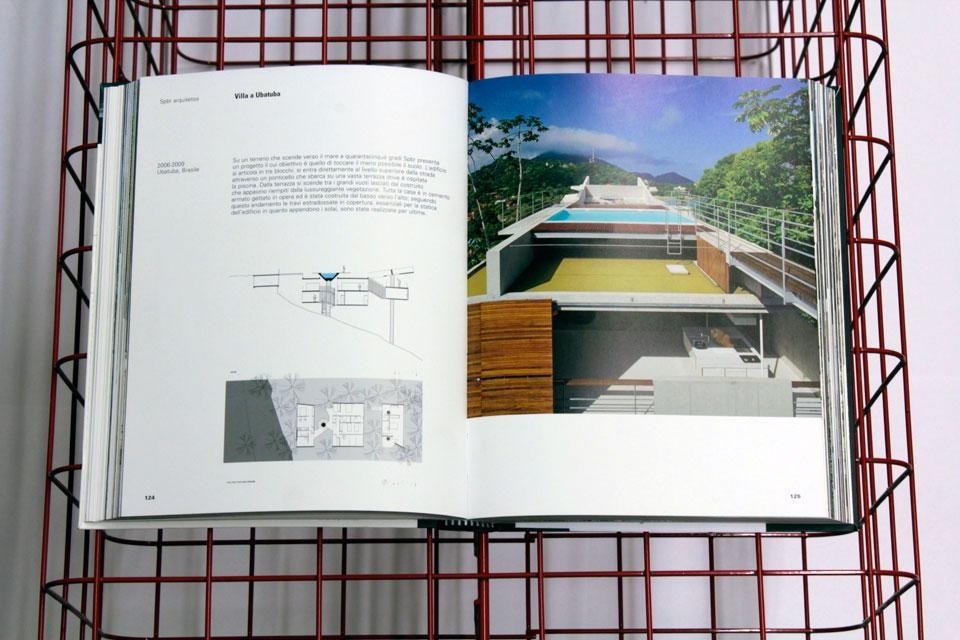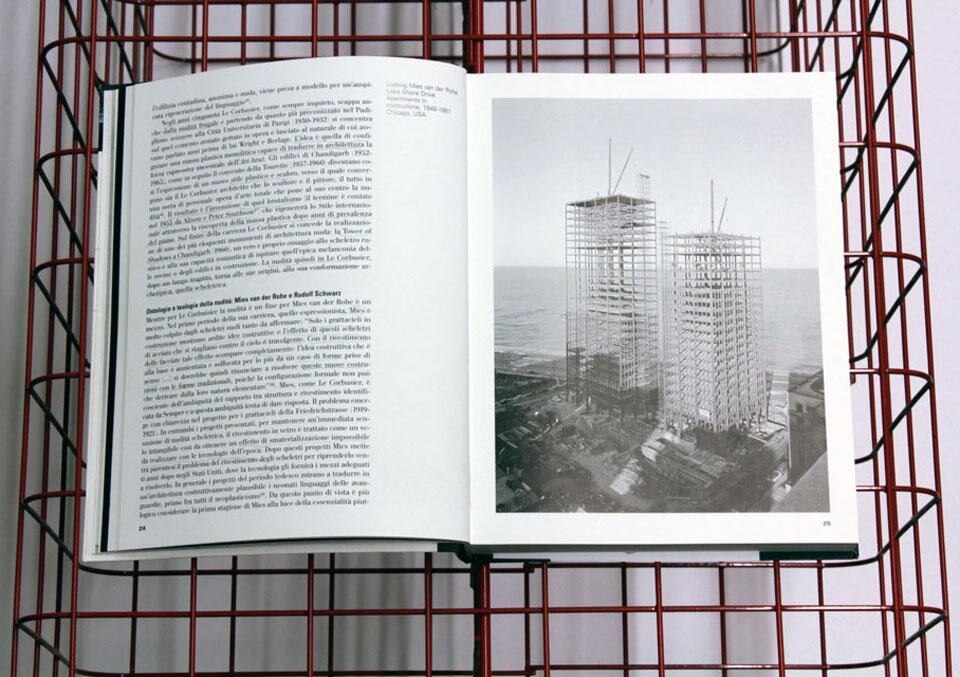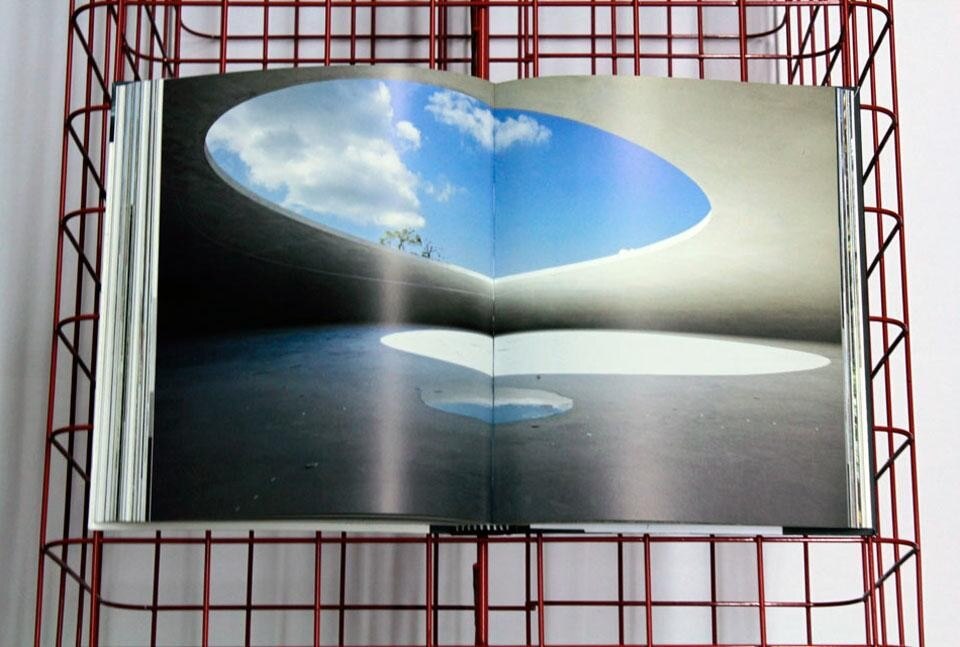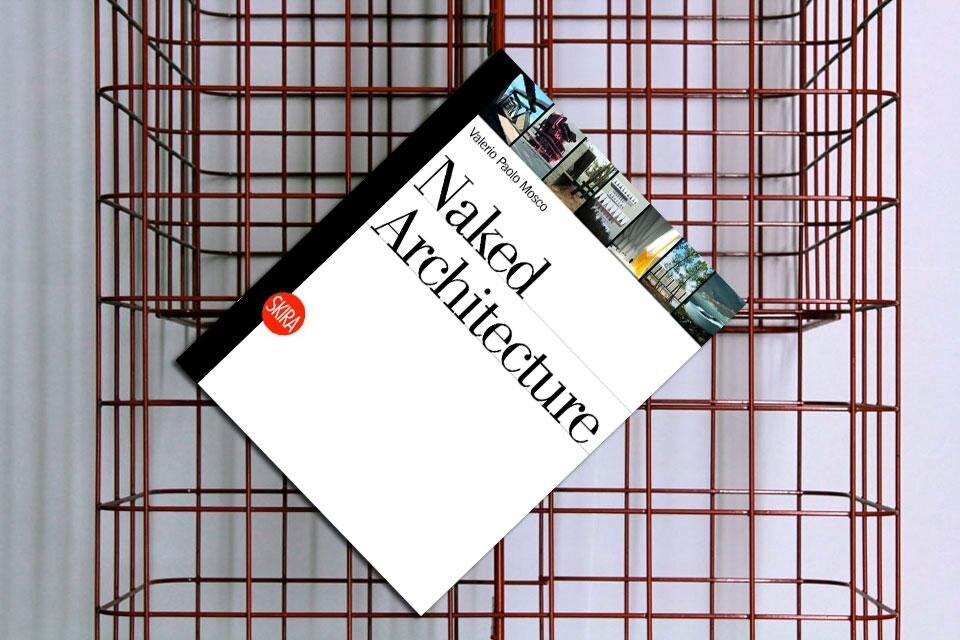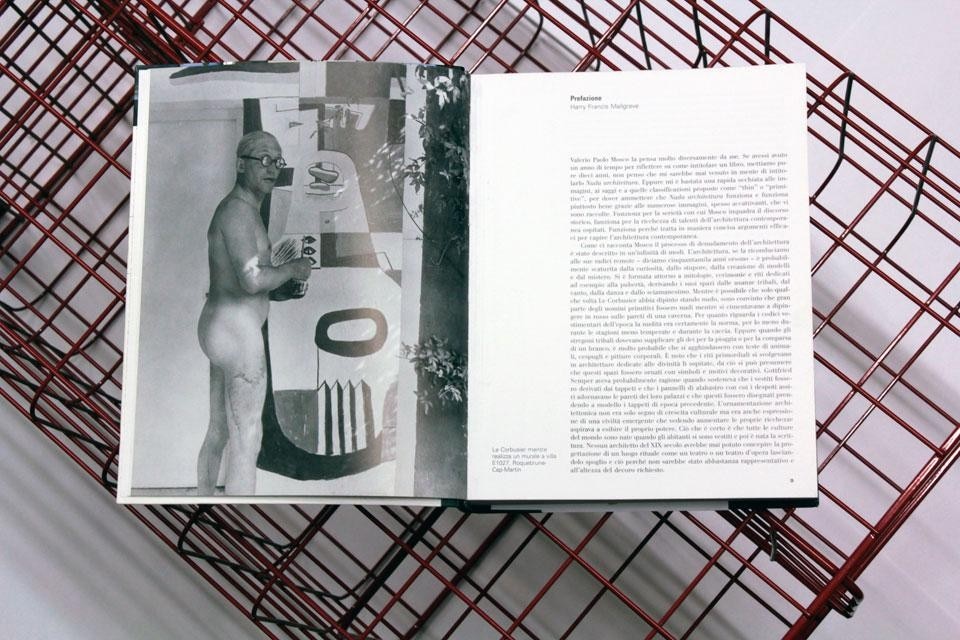Reading Nuda archiettura by Valerio Paolo Mosco is undoubtedly an excellent way to retrace the history of architecture over the course of just a few pages. The opening essay is a compound of notions that open one's eyes to tendencies that are easily found in the chapters of history. The first thirty pages are offered as a tool for comprehending Mosco's view of architecture, a different and interesting view even if obviously criticisable. I don't believe that I can stand in for the author in offering a definition of architettura nuda – nude architecture but I can suggest very superficially that it deals with concepts of structure, cladding and decoration. Themes therefore that recur, albeit in different forms, in many histories of architecture. To conjecture a 'nude architecture' does not mean proposing a new language or creating a new school but merely educating in comprehending the tendencies that today, as in the past, recur almost spontaneously. These tendencies exist because the facts and artefacts exist, to call them nude or something else becomes only a title, perhaps too a colourful and attractive one. In reality it is not possible to settle the matter so quickly however because Mosco fills his pages with artistic, historical and philosophical references citing Agamben, Kant, Zevi, Duchamp and many other theorists of the concept of nude in various fields. This is for the purposes of latching onto proven thoughts and definitions and shifting them into an architectural sphere. The theoretical apparatus, placed at the basis of these concepts is almost too punctilious and in parts makes for slow reading of a book that is consistently anything but light. The essay is a concentrate of notions, citations and lines of reasoning the very density of which make it not easy to internalise. One quickly realises however that the idea of nudity is actually of modern anti-decorative architecture and also refers to primitive, frugal and essential constructions. Nude architecture is hence linked to the use of tectonic materials and displays sincerely its own essence. Architectural designs become the protagonists of the second, larger section of the book. After the introductory essay, the author presents over 60 actual case studies that can be placed under the umbrella of nude architecture. Buildings that are famous and less so are separated into six categories. The concept of nudity is so inclusive and has such blurred edges that it is not easy to set limits as to the list of designs that could come into this category. In fact the shortlist does not have the aim of exhausting all citable cases but rather wants to train the eye in a way that enables one to personally pigeonhole one's own design references in one category or another. The six sub-classes into which the author breaks up the concept of nudity are: Skeletal, Rough, Think, Lyric, Frugal and Primitive. English terms are also used in the Italian version of the text. This is perhaps connected to the fact that the definition of nudity does not have exactly clear confines and so by using foreign words one appropriates that slight vagueness that comes with translation. Certainly open-endedness plays an important role and is a sign of open thinking. Contributions by Harry Francis Mallgrave and Hans Ibelings who have written the preface and prologue of the book are certainly important to comprehend the resonance of the argument. Mallgrave seeks to offer scientific motivation for the attraction of nude architecture, leading on to cite research carried out on the cerebral cortex. It is demonstrated that even just seeing an object, a surface and therefore also a work of architecture, the brain projects in us the sensation of having touched it. Each object solicits therefore the hedonistic and emotive centres of our brain, unleashing that whole series of sensations that place us in symbiosis with a space. This is why we react differently before the rough and cold surface of a structure in raw concrete or to the warm reverberation of a coat of plaster. Ibelings meanwhile places the accent on the semantic difference between nude and naked, a difference that is not present in the Italian language and that he expresses with precise and linear argumentations. The images of nude architecture shown in the book suggest a sense of incompleteness or an artefact under construction. Furthermore the concept of nude can tend towards the instinct to show the intimate parts of a building (naked) or reveal an atmospheric and tactile material quality (nude). It follows that naked corresponds to an honest architecture that shows things as they are, also running the risk of being inopportune. While the label nude subtends to an elegant and refined beauty. Nuda architectura, written by Valerio Paolo Mosco and published by Skira, is thought-provoking and presents architectural designs and architects. It is not a book to buy just to get hold of some interesting references but rather to train oneself in a critical vision. On reading it you will discover how to look at buildings distinguishing them between nude and clothed and perhaps even to imagine them undressed.
